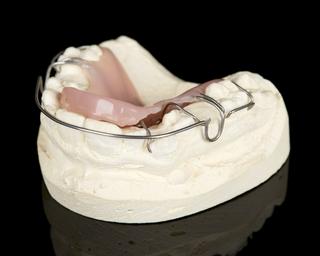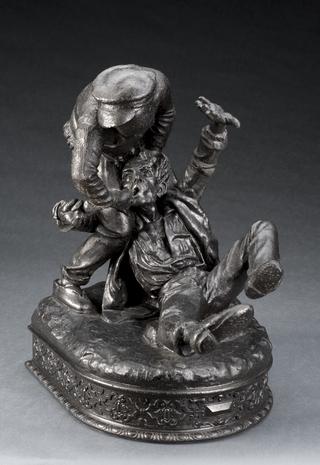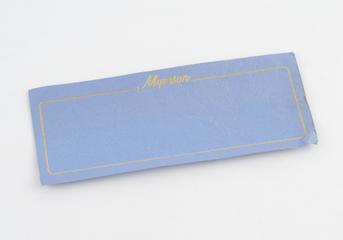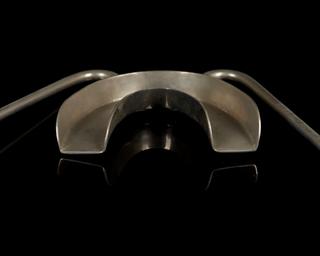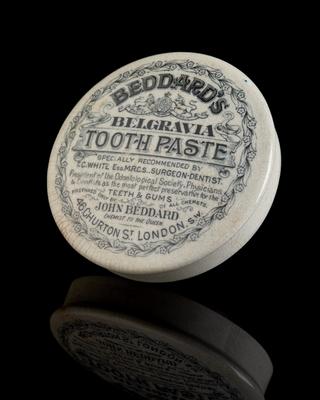

Dental key, all steel, straight slightly ornamented shaft, plain circular bolster, single claw position, convex claw margin with two notches and inner serrations, late 18th century, possibly English
Dental keys or tooth keys were introduced in 1730 and became the instrument of choice for tooth extraction from the 1770s onwards. The steel claw was placed over the top of the tooth and the bolster, the long metal rod to which the claw is attached, was placed against the root of the tooth. The key was then turned as if the user was opening a lock, hopefully removing the tooth. Undoubtedly this operation was extremely painful for the patient, causing injuries to the surrounding teeth and gums. The patient would have only had alcohol or herbal remedies for pain relief.
Details
- Category:
- Dentistry
- Collection:
- Sir Henry Wellcome's Museum Collection
- Object Number:
- A106347
- Materials:
- whole, steel
- Measurements:
-
overall: 23 mm x 128 mm x 92 mm, .1kg
- type:
- dental key
- credit:
- Murdoch, D.M.
